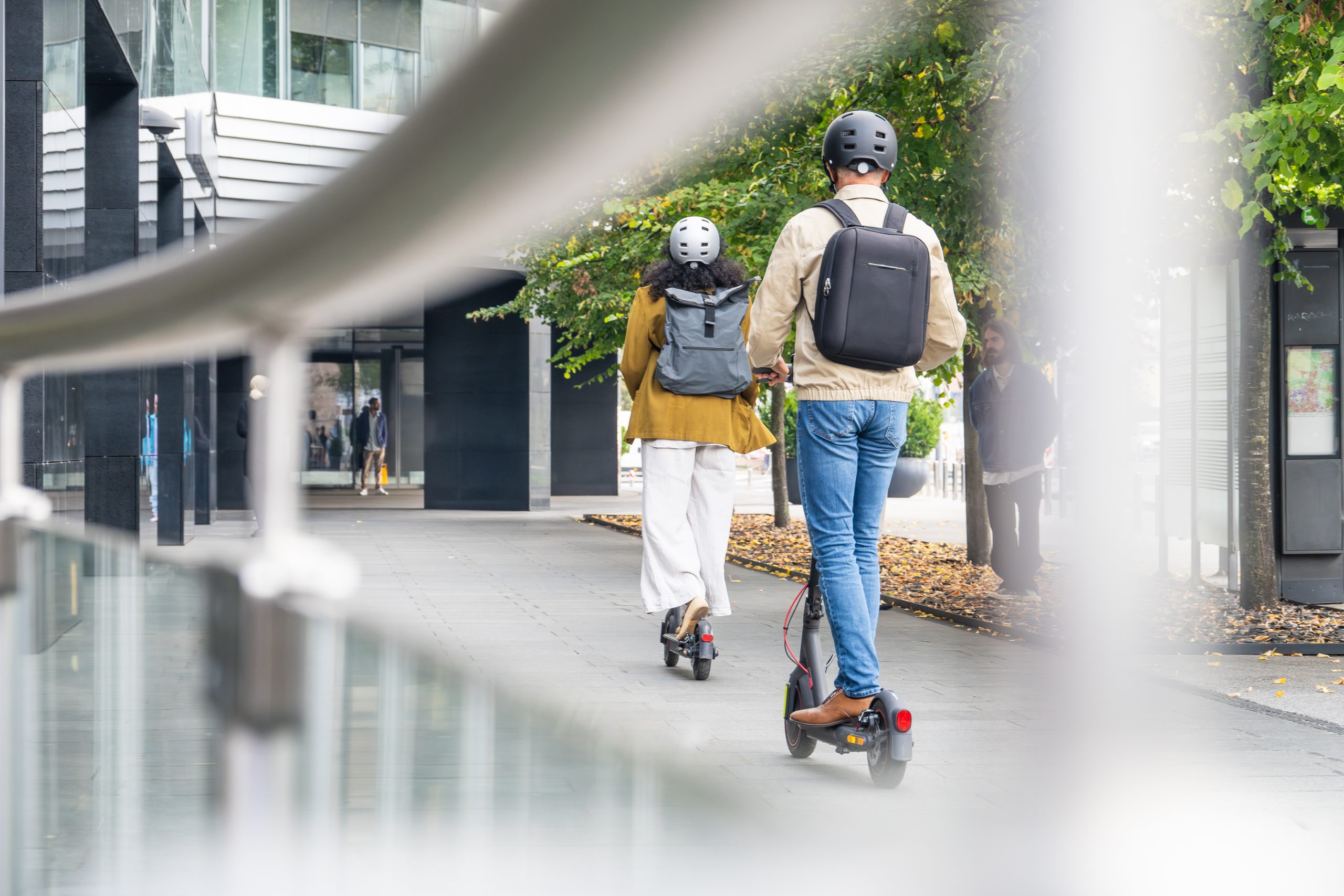The future of local transportation is turning to electricity — and many communities are considering infrastructure like charging stations, electric fleets and appropriate parking. They now have a trusty guide to help make evidence-based decisions, thanks to a PICS-funded internship.
A new mobility electrification handbook from Climate Caucus provides a collection of best practices from smaller municipal governments across Canada. It was researched and written this past summer by PICS intern Steven Mater, a student in the Master of Urban Studies program at Simon Fraser University, through a 13-week internship.
Climate Caucus is national network of more than 500 elected municipal officials who are working on their communities’ approaches to climate change, social justice and biodiversity.
Mater says the handbook has many lessons, but the most important isn’t technical, though it may be challenging.
“If you’re serious about wanting to achieve whatever your target your community has for zero-emissions vehicles, promoting it and finding ways to break down the barriers are the most important,” Mater says.
The handbook is based on interviews with officials and a scan of bylaws, funding programs, charging infrastructure and more from small- and medium-sized towns all over the country. It focuses on local transportation only, rather than longer distances or commercial trucking, for example.
It will be presented on Sept. 26 on an all-caucus call featuring Mater and several civic government leaders from B.C. and Ontario.
Some caucus member communities have plans looking five years into the future, says Mater, while others are just getting started with measures such as bylaws that require EV infrastructure in all new multi-family housing. Still others are trying projects such as one that makes municipal electric fleet vehicles available for carshare outside of work hours.
But for all the work local governments can do to accommodate EVs, they’re not a silver bullet, he adds, noting that a community aiming to achieve sustainable mobility needs to make it easy for its citizens to use regular bikes, ebikes and escooters, and access electric-powered public transit.
The point of the handbook is to show these smaller communities, which usually don’t have the staff to conduct this sort of research, how their counterparts have handled similar decisions, says the caucus’ executive director, Alex Lidstone.
“It’s such important work, and it couldn’t have been done without this PICS internship,” Lidstone says. “The Climate Caucus depends on the work of interns like Steven to provide resources like this to our members.”
The Climate Caucus internship was one of 13 awarded by PICS this year. Each 13-week placement comes with $12,000 in funding to cover the students’ pay. To be eligible, students must be enrolled, or accepted for enrolment, in a full-time undergraduate or graduate program at one of PICS’ four partner institutions.
For more information, go to the PICS internship program page. The next call for applications will be in November 2022.



